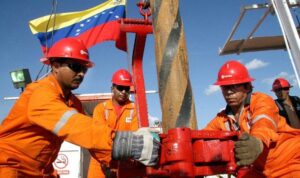
Published 3/31/2025 15:32 | Edited 31/03/2025 16:25
China National Offshore Oil Corporation (CNOOC) has announced the discovery of a large oil field in “deep and ultra -deep areas” east of the southern China Sea. Proven reserves exceed 100 million tons of equivalent oil, according to information released by the Xinhua news agency on Monday (31).
The discovery occurs in a context where China seeks to reduce its dependence on oil imports and reinforce its energy safety. However, experts point out that the country’s gross oil imports can reach peak next year, as demand for transport fuel begins to slow down.
The oil field, called Huizhou 19-6, is located about 170 kilometers from the Shenzhen coast and is within the exclusive economic zone of China, outside the disputed regions of the Southern China Sea. The average depth in the discovery area is 100 meters.
Production and exploration potential
According to CNOOC, a Huizhou 19-6 field test well produced 413 barrels of gross oil and 2.41 million cubic feet of natural gas per day. CNOOC chief geologist Xu Changgui said the discovery confirms the existence of the largest “classic oil field” in China, highlighting the high potential for exploration of resources in high temperature and pressure basins on the coast of the country.
The recent discovery in the Huizhou 19-6 field reinforces the importance of the East Southern China Sea in the expansion of reserves and production of the company. This new discovery adds to those already held in the region in 2023, including Huizhou 26-6 North, Panyu 10-6, Kayping 18-1 and Xijiang 24-2.
The company has focused on exploration of deep water and deep-play, reaching significant successes, such as the discovery of Kailing 18-1, which represents the first discovery of a 100 million tonne in deep water in the southern China Sea. In addition, discoveries in deep formations in Huizhou Sag and Panyu SAG demonstrate the continuous potential of the region.
The development of the Huizhou field 19-6 aligns with the company’s strategy to increase its reserves and production through independent operations and cooperation projects. The Eastern Southern China Sea has been consolidated as one of the main growth areas, with initiatives such as the Huizhou Petrolyte field development project 26-6.
Source: vermelho.org.br

